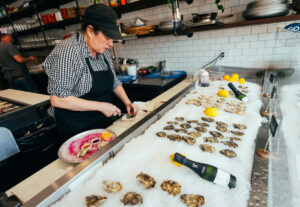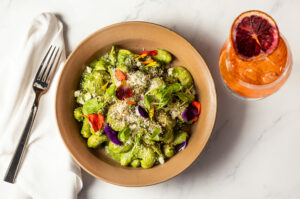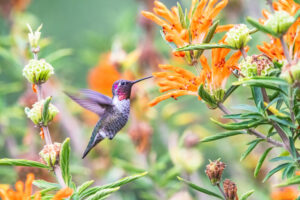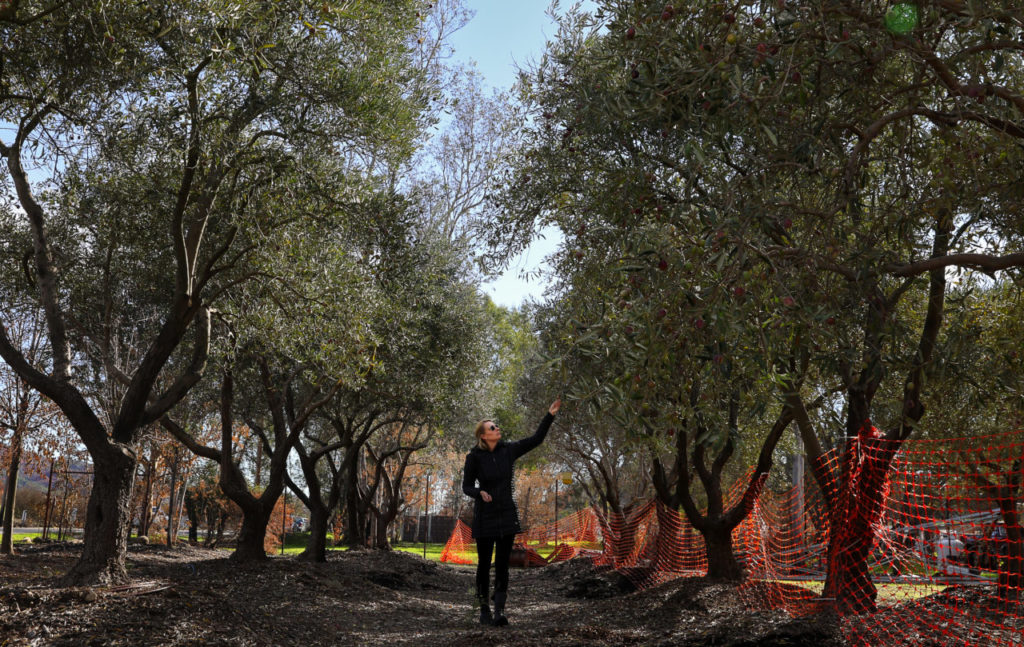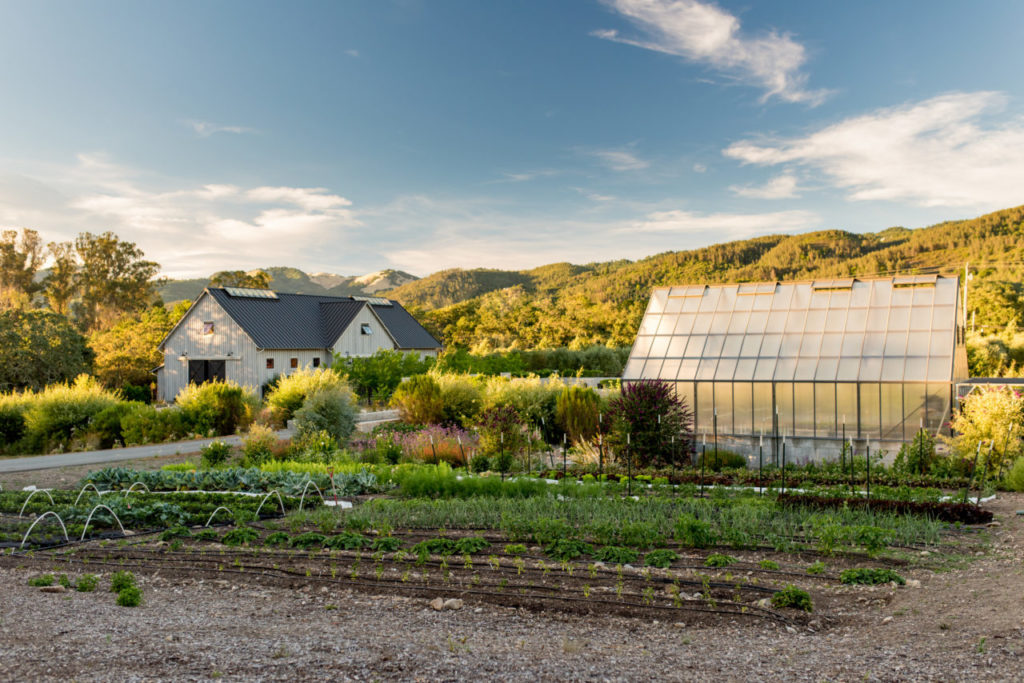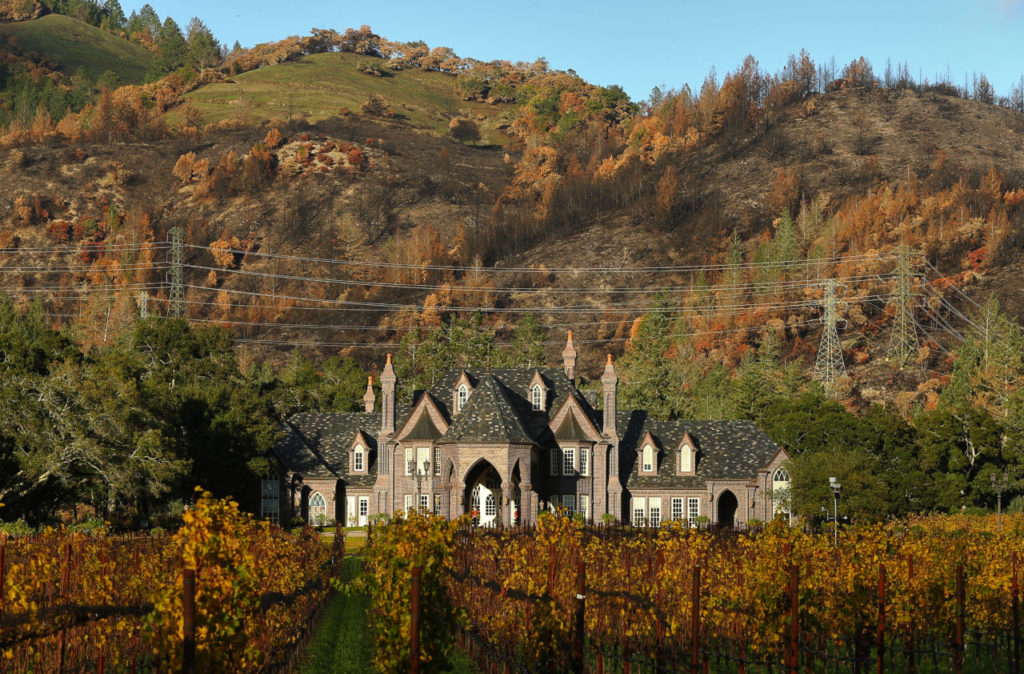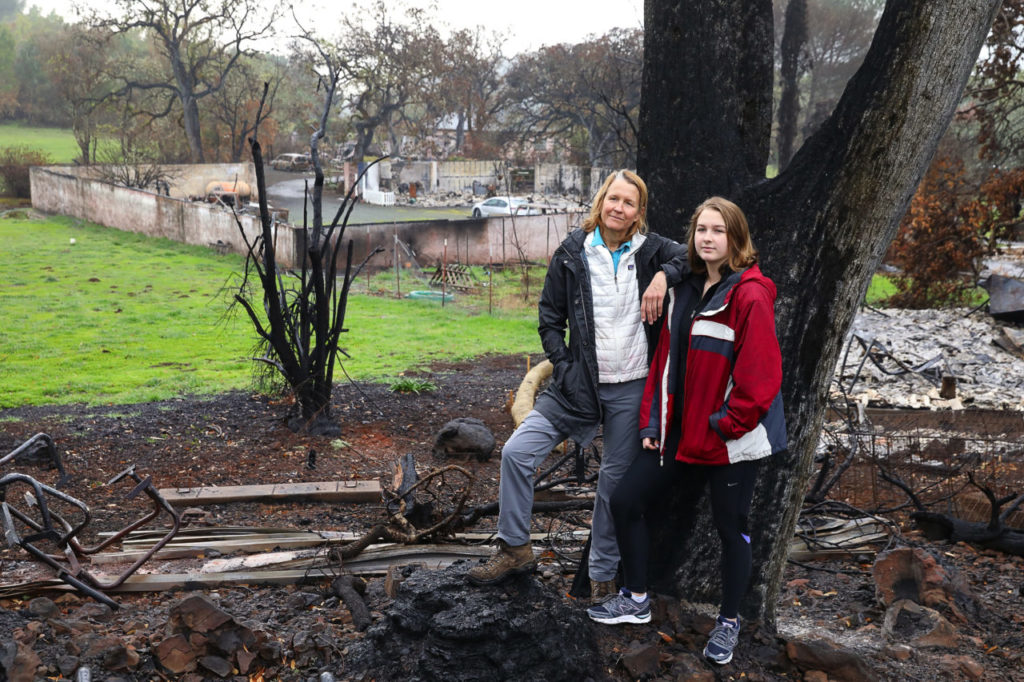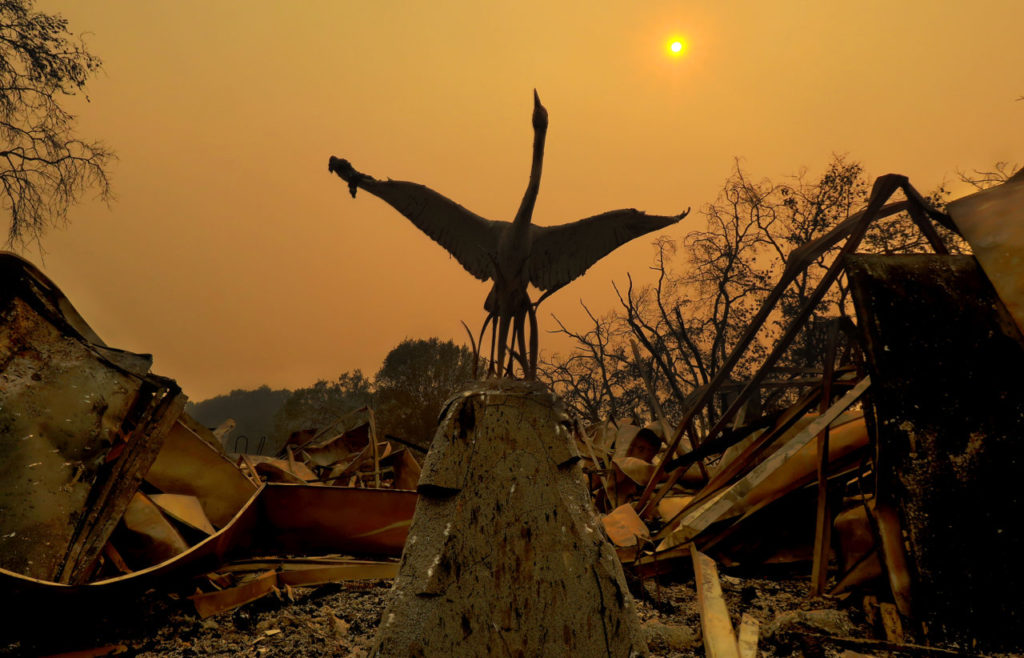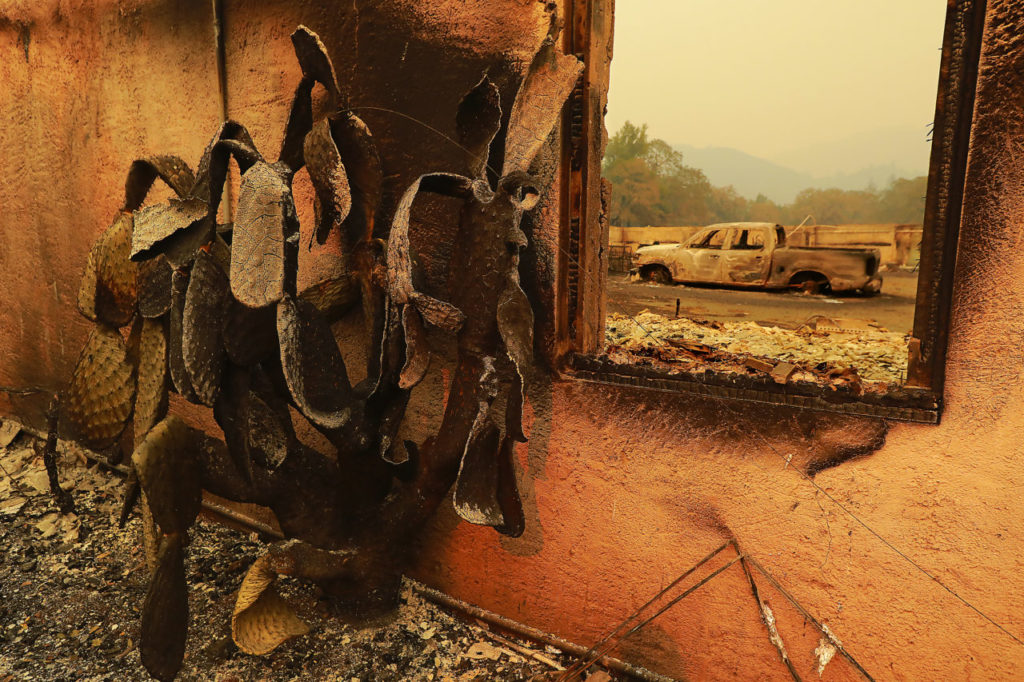Those used to gazing up at the deeply forested mountains framing the Valley of the Moon now look to the east in shock. The Nuns Fire that blowtorched through the upper Sonoma Valley at the end of harvest has transfigured the multimillion dollar views that inspired writers like Jack London and made it one of the most prized destinations in Wine Country.
The firestorm vandalized the landscape, scorching hillsides and leaving haunting bald patches that look like iron burns.
Hummocks, once green and now the color of shale, rise denuded above vineyards. Stands of oak and other deciduous trees still standing wear crowns of brittle burned leaves. Many evergreens are now brown.
More heartrending are the ashen homesites eerily strung like Pompeian ruins along Warm Springs Road and Highway 12, and tucked back on country lanes between Kenwood and Glen Ellen. The loss of some 500 homes in the Sonoma Valley broke up tight-knit neighborhoods and placed a massive strain on a community already shy of affordable housing.
But there are signs of life. With the first fall rains, grass shoots poked through the blackened fields, repainting the landscape as nature began the inevitable process of reparation.
And that has given residents and businesses grieving lost homes and property, and the sight of burned ridge lines, reason to believe that the valley’s scars will eventually fade.
“The contrast between these lush, brilliant green juicy sprouts and the dead black ash on the ground surface is inspiring,” said Caitlin Cornwall, a biologist and research program manager for the Sonoma Ecology Center. Flames came within 100 feet of their offices at Sonoma Developmental Center.
“On one hand it’s very much a visceral, human disaster. We all know people who have lost their homes and just being on these burn sites is shocking,” she lamented. “The smell is bad. There are toxics in the ashes and debris left behind. And it’s been a big hit to the public in terms of the economy and their routines. A lot of us were evacuated and stressed out. But on the other hand, we all know the land has been waiting for and wanting and needing fire ever since European settlers stopped the regular Indian burning that the land is used to.”
Tensions Tamed
Before the fires, as another harvest launched in September, the valley’s biggest challenge centered on the pace of growth in the wine industry, the strain of increasing traffic along the storied Valley of the Moon Scenic Route and the loss of residential housing to vacation rentals for tourists flocking from around the world to take in the region’s charms.
But that seems like another lifetime. While there has been an increase in utility and construction trucks for cleanup and rebuilding, those who depend on the wine economy now worry that tourism will drop. Despite the fact that none of the valley’s wineries suffered major damage, the images of smoke and flame that played out in the national media for weeks are seared into the minds of many people.
“Traffic is down at all of our locations,” said Josie Gay, head of the Heart of the Valley Association, which markets 29 wineries between Kenwood and Glen Ellen.
“The general misconception out there is that everything is destroyed,” said Steve Ledson, whose Gothic “castle” winery barely escaped the inferno. “People are calling and asking, ‘What is the landscape like? I don’t think I can bear to see the destruction.’” He acknowledged the widespread perception that Sonoma Valley “is not a fun place where anyone would want to go on vacation.”
The number of visitors to his Kenwood winery, as well as his hotel and restaurant on the Sonoma Plaza, are down. Damage to vineyards with fruit still on the vine will amount to millions in losses, he added. He said he already has cut the number of wine club events from six to two for 2018 and has all but halted the weddings that were a signature of his winery.
One Glen Ellen resident reflected that a silver lining in the tragedy is that it provided a timeout to the mounting tensions over growth in the tourism industry and the quality of small town, rural life cherished by residents.
“Certainly I wouldn’t want this to happen to anybody but it does make everyone step back a little. I know a lot of people taking VRBO’s off the market and now renting them full-time so people have places to live.”
Ledson was one of them. He said he made two of his vacation rentals available long term to residents.
“In times like this you’ve got to be helping each other,” said Ledson, who before the fire had dropped plans for a new 50,000-case winery off Highway 12 on Frey Road in Kenwood. He added he now plans to make the 18 new homes he’s building on West Spain Street in Sonoma, available as rentals to ease the shortage.
Recovering
As the new year begins, valley residents are showing grit and not giving in to their losses.
Chris and Sofie Dolan spent more than five years turning 10 acres along Highway 12 into the picturesque Flatbed Farm. Their country home and pool house was spared but a 7,200-square-foot barn designed by noted Wine Country architect Howard Backen is in ruins along with fencing and infrastructure.
“To see it in its current state is pretty emotional,” Chris Dolan conceded. “For us and the community it was much more than a barn.” It was, he said, a community gathering spot, and the centerpiece of their business. But he said they’re moving ahead with plans to rebuild and are looking forward to spring, using their vintage truck as a mobile produce stand.
“We won’t have a barn but we’ll be planting our spring crops and taking inventory of what survived in our orchard,” he vowed.
Farther up the highway, Rebecca and Gary Rosenberg also plan to rebuild and replant their lavender farm in Kenwood. Barely a trace of the bucolic spot remains next to Chateau St. Jean Winery where they raised their family along with fragrant fields of purple lavender. They’ve taken emotional refuge for the time being in a temporary rental in San Diego, until initial shock wears away in the valley. But they, too, remain optimistic.
“The character of Sonoma will not change,” Gary said. “The whole community is getting closer and neighbors are cooperating on the fenceline. There’s going to be a wonderful sense of pride. The wineries will always attract people and the natural beauty will be back.”
Bouverie Preserve
When Sasha Berleman surveys the scorched wildlands of Glen Ellen’s Bouverie Audubon Preserve, she doesn’t see devastation, but renewal. The 28-year-old fire ecologist worked through the night of the firestorm with two others to save the historic homes of David Bouverie and writer M.F.K. Fisher. Virtually every other structure on the 535-acre preserve burned to the ground, including a historic barn that served as an educational center.
The fire, she lamented, was “absolutely a human disaster.” But the effect on the landscape is not catastrophic.
Come spring, the fire will deliver an unexpected gift. Fire poppies, which need wildfire to germinate, will paint the meadows. Non-native grasses that suppressed other wildflowers have been burned off, clearing the way for a breathtaking wildflower bloom. The spring will be lush and green.
“This all has a silver lining for me,” she said, “knowing that in a lot of ways, the fire benefited our very loved open space. So even in the face of all the human suffering, you can look to spring and know there is going to be this incredible rebirth process we can all witness and lean on, as a vision of hope in the future.”





